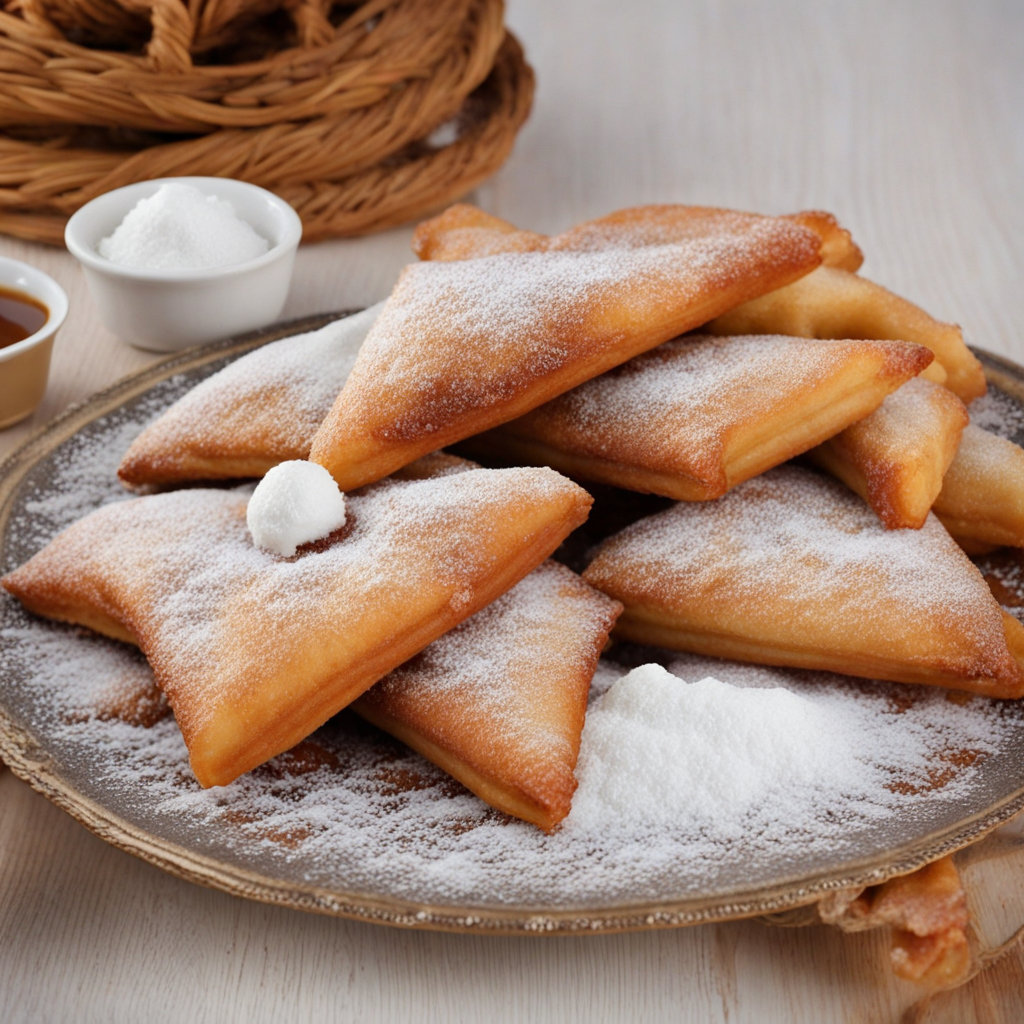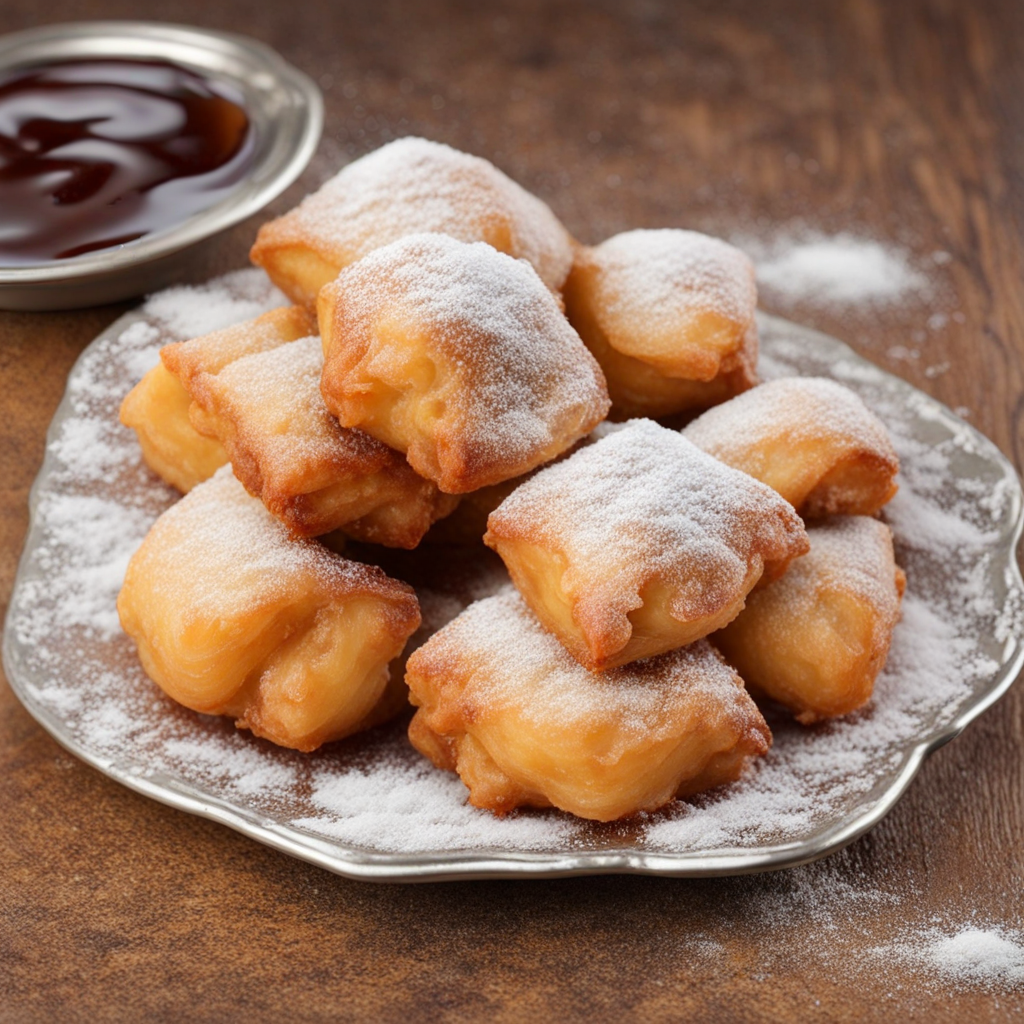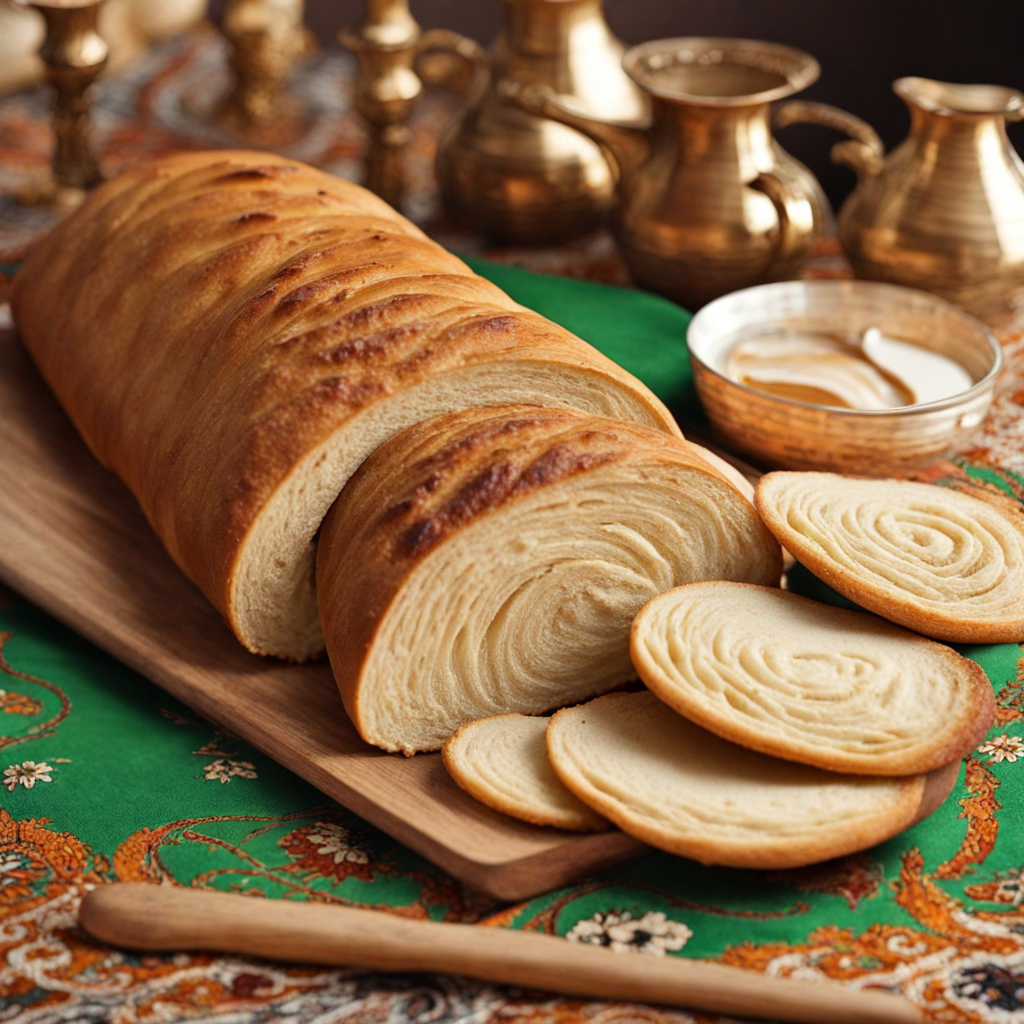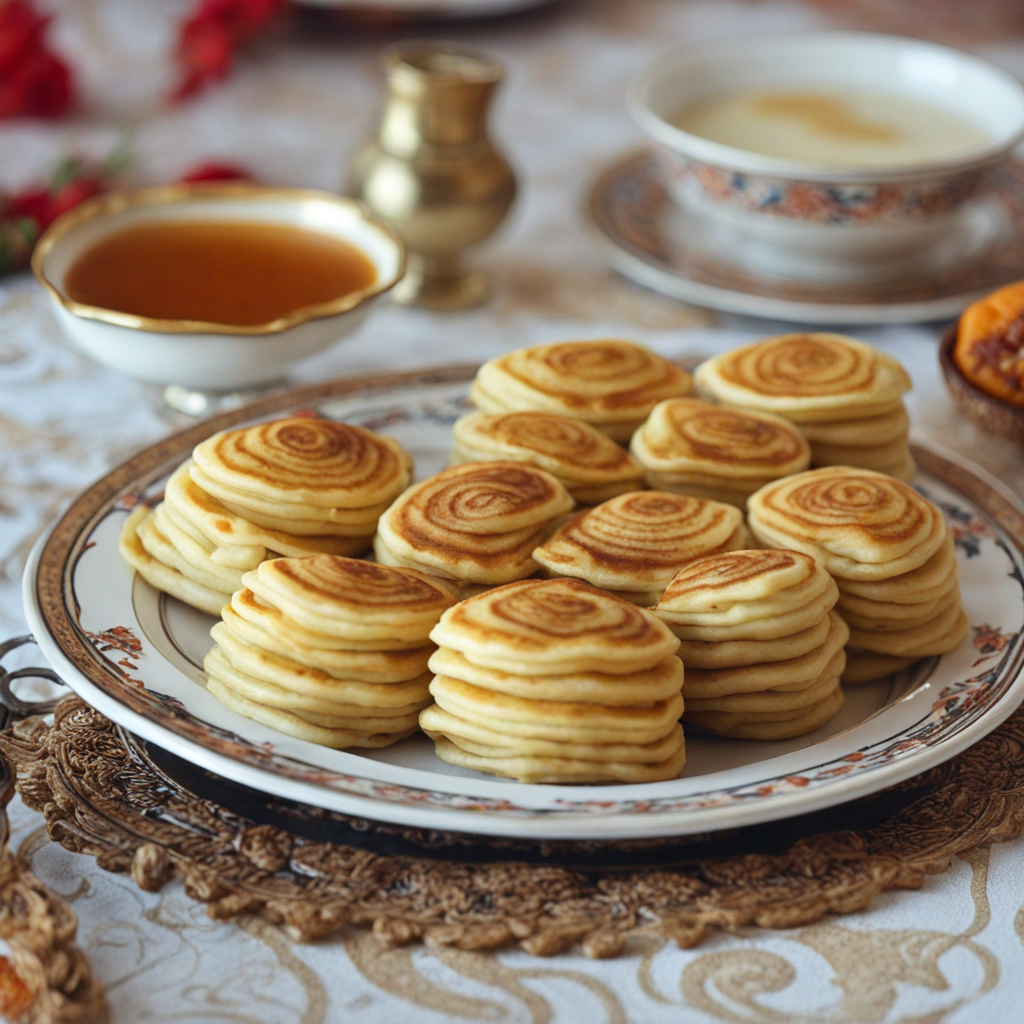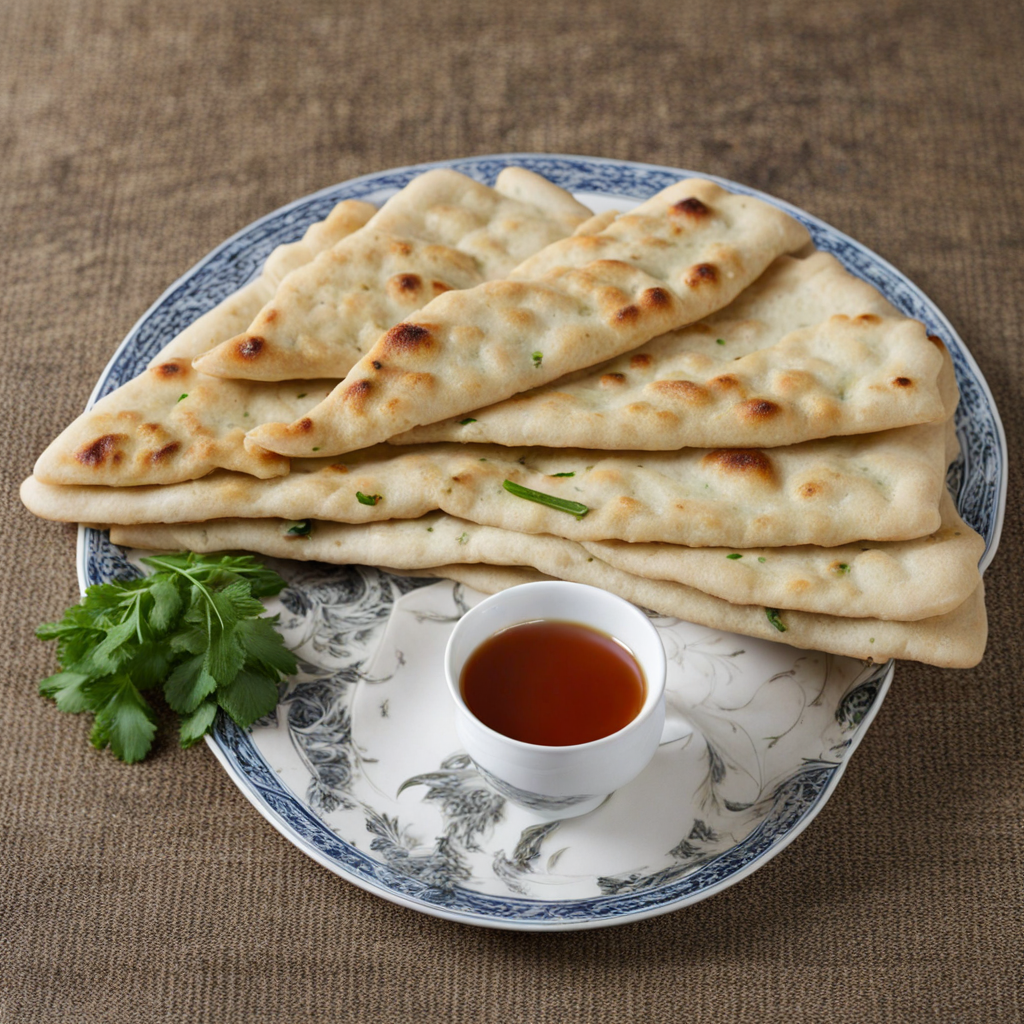Zalabiya
Zalabiya is a delightful and unique dessert hailing from Turkmenistan, characterized by its golden, crispy exterior and soft, airy interior. This traditional treat is made from a simple batter of flour, yeast, and sugar, which is then deep-fried to perfection. The cooking process creates a beautiful, intricate spiral shape that is visually appealing and enticing. The moment you take a bite, you’re greeted with a satisfying crunch that gives way to a fluffy, slightly sweet center, making it an irresistible indulgence for any sweet tooth. What sets Zalabiya apart from other fried pastries is its aromatic flavor profile. Often, it is lightly flavored with cardamom or vanilla, which adds a warm and fragrant note to each piece. After frying, the Zalabiya is typically doused in a generous coating of syrup, sometimes infused with rosewater or citrus, which enhances its sweetness and adds a moist, sticky finish. This combination of crunchy and syrupy textures creates a delightful contrast that is both comforting and exciting. Zalabiya is not just a dessert; it is often enjoyed during special occasions, family gatherings, or as a beloved snack throughout the day. The experience of sharing Zalabiya with loved ones embodies the warmth of Turkmen hospitality. Pair it with a cup of aromatic tea or a refreshing yogurt drink, and you’ll find that this heavenly treat encapsulates the rich culinary traditions of Turkmenistan, inviting you to discover a new and delightful taste that you won't soon forget.
How It Became This Dish
The Rich History of Залабия: A Culinary Jewel of Turkmenistan #### Origins and Ingredients Залабия, a traditional sweet treat from Turkmenistan, has roots that delve deep into the cultural and culinary traditions of Central Asia. This delightful dish, which can be likened to a type of fried dough or pancake, has a unique texture and flavor that reflects the agricultural practices and local ingredients of the Turkmen people. The origins of Залабия can be traced back to ancient times, where nomadic tribes roamed the vast steppes of Central Asia. These tribes relied heavily on the natural resources available to them, which included wheat, dairy, and honey. The dough used to make Залабия is primarily made from wheat flour, water, and sometimes yeast, making it a staple that could be easily prepared on the go. This adaptability was crucial for the nomadic lifestyle, allowing them to create nourishing dishes using minimal resources. Honey, a significant ingredient in Залабия, was not only a sweetener but also a symbol of prosperity and health. The use of honey in various Central Asian cuisines signifies the importance of beekeeping in the region and its connection to agriculture. The combination of simple ingredients, such as flour and honey, reflects the resourcefulness of the Turkmen people, who have historically thrived in a challenging environment. #### Cultural Significance Залабия holds a special place in Turkmen culture, often served during festive occasions and family gatherings. It is a symbol of hospitality, reflecting the age-old tradition of inviting guests and offering them something sweet. In Turkmen households, preparing Залабия is not merely a culinary task but a communal activity that brings families together. The process of mixing the dough, frying it, and drizzling honey on top is usually a shared experience, enhancing familial bonds through the act of cooking. Moreover, Залабия is often prepared during significant cultural events, including weddings, national holidays, and religious celebrations. During these occasions, the dish is presented to guests as a gesture of goodwill and hospitality. The act of serving Залабия is intertwined with the values of generosity and warmth that are central to Turkmen culture. The dish is often accompanied by traditional beverages, such as milk tea or ayran (a yogurt-based drink), which complements its sweetness and enriches the dining experience. #### Development Over Time As with many traditional dishes, the preparation and presentation of Залабия have evolved over the years. While the basic recipe has remained largely unchanged, modern adaptations have introduced variations in flavor and presentation. In urban areas, cooks have started experimenting with different fillings, such as nuts, fruits, or even chocolate, appealing to a younger generation that seeks innovation in their culinary experiences. The globalization of food culture has also influenced Залабия's place on the culinary map. With the rise of food tourism, international chefs and food enthusiasts have begun to explore Central Asian cuisines, bringing dishes like Залабия into their own kitchens. This exposure has led to a revival of interest in traditional recipes, as people seek to connect with their heritage and share it with others. Cooking classes focusing on Turkmen cuisine often include Залабия, allowing participants to engage with the culture hands-on and understand its historical significance. #### Culinary Techniques and Variations The process of making Залабия is an art in itself. Traditionally, the dough is rolled out and cut into shapes before being deep-fried until golden brown. Once fried, it is often drizzled with honey or syrup and sometimes dusted with powdered sugar. The texture is crispy on the outside while remaining soft and fluffy on the inside, providing a delightful contrast that is both satisfying and indulgent. While the classic version remains popular, regional variations of Залабия can be found throughout Turkmenistan. In some areas, cooks may incorporate local spices or herbs into the dough, creating unique flavor profiles that reflect the diversity of the nation's culinary landscape. Additionally, the method of frying can vary; some prefer shallow frying for a lighter result, while others opt for deep frying for a richer taste. The influence of neighboring countries, such as Iran and Afghanistan, can also be seen in variations of Залабия, as culinary exchanges have historically occurred across borders. These interactions have enriched the dish, allowing it to evolve while still retaining its core essence. #### Contemporary Relevance In contemporary Turkmenistan, Залабия continues to be a beloved dish that bridges the gap between tradition and modernity. As young Turkmen chefs experiment with recipes, they are not only preserving their culinary heritage but also infusing it with new life. Food festivals celebrating traditional dishes have become commonplace, with Залабия often taking center stage, showcasing its importance as a cultural artifact. Moreover, as the world becomes more interconnected, the appreciation for traditional foods like Залабия is growing. With social media platforms showcasing homemade recipes and food blogs dedicated to Central Asian cuisine, Залабия is gaining recognition beyond Turkmenistan’s borders. This newfound interest encourages a dialogue about the rich culinary history of the region, fostering a greater understanding of its cultural significance. #### Conclusion The story of Залабия is a testament to the resilience and adaptability of the Turkmen people. Rooted in agricultural practices and steeped in cultural significance, this sweet treat transcends mere sustenance; it is a symbol of hospitality, community, and tradition. As it continues to evolve and adapt to modern tastes and trends, Залабия remains a cherished part of Turkmen culinary heritage, inviting all who encounter it to experience the warmth and richness of Turkmen culture. Whether enjoyed at a family gathering or a festive celebration, Залабия embodies a sense of belonging that resonates deeply within the hearts of those who call Turkmenistan home.
You may like
Discover local flavors from Turkmenistan


